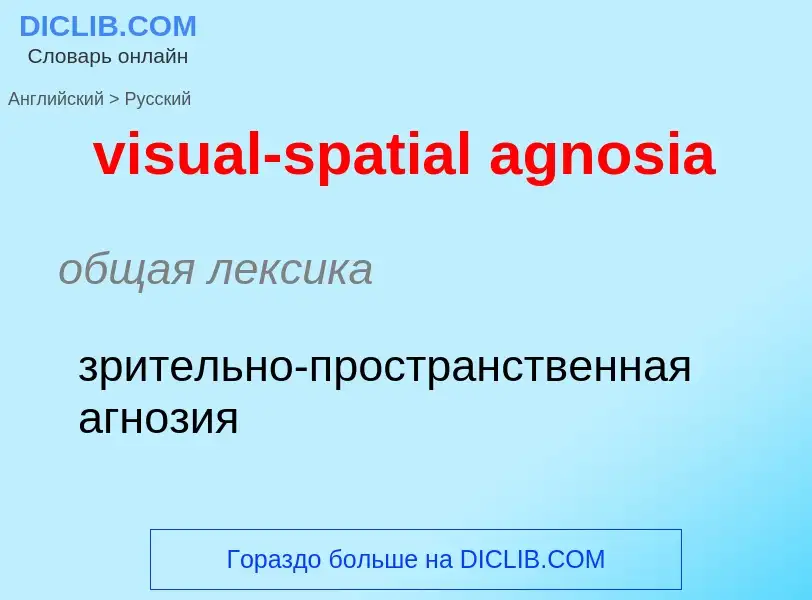Перевод и анализ слов искусственным интеллектом ChatGPT
На этой странице Вы можете получить подробный анализ слова или словосочетания, произведенный с помощью лучшей на сегодняшний день технологии искусственного интеллекта:
- как употребляется слово
- частота употребления
- используется оно чаще в устной или письменной речи
- варианты перевода слова
- примеры употребления (несколько фраз с переводом)
- этимология
visual-spatial agnosia - перевод на русский
общая лексика
зрительно-пространственная агнозия
общая лексика
зрительная агнозия
медицина
апперцептивная агнозия
Определение
Википедия
Visual agnosia is an impairment in recognition of visually presented objects. It is not due to a deficit in vision (acuity, visual field, and scanning), language, memory, or intellect. While cortical blindness results from lesions to primary visual cortex, visual agnosia is often due to damage to more anterior cortex such as the posterior occipital and/or temporal lobe(s) in the brain.[2] There are two types of visual agnosia: apperceptive agnosia and associative agnosia.
Recognition of visual objects occurs at two primary levels. At an apperceptive level, the features of the visual information from the retina are put together to form a perceptual representation of an object. At an associative level, the meaning of an object is attached to the perceptual representation and the object is identified. If a person is unable to recognize objects because they cannot perceive correct forms of the objects, although their knowledge of the objects is intact (i.e. they do not have anomia), they have apperceptive agnosia. If a person correctly perceives the forms and has knowledge of the objects, but cannot identify the objects, they have associative agnosia.

